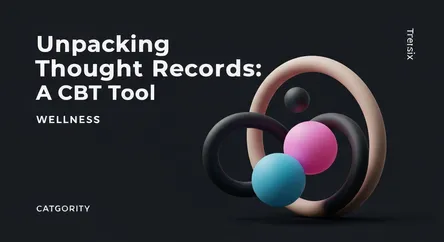Wellness
Unpacking Thought Records: A CBT Tool

Discover thought records, a key Cognitive Behavioral Therapy (CBT) tool designed to help you identify, challenge, and reframe negative thoughts.
What is it?
A thought record is a structured cognitive behavioral therapy (CBT) exercise used to identify and analyze automatic negative thoughts. It is a tool, often a simple worksheet, that helps you log a triggering situation, the immediate thoughts and emotions you experience, and the evidence for and against those thoughts. The goal is to challenge cognitive distortions—irrational or exaggerated thinking patterns—and cultivate a more balanced and realistic perspective. This technique makes you an observer of your own mind, creating a clear link between your thoughts, feelings, and actions.
Why is it trending?
As awareness of mental health and mindfulness grows, so does the popularity of accessible, evidence-based tools like thought records. They are a cornerstone of CBT, one of the most widely validated therapies for conditions like anxiety and depression. The trend is also fueled by the rise of mental wellness apps, which often digitize this classic pen-and-paper exercise, making it easier for people to integrate into their daily lives. This shift towards proactive self-care and mental fitness has brought established therapeutic techniques from the clinic into the mainstream.
How does it affect people?
Regularly using thought records can significantly improve mental well-being. It empowers individuals by increasing self-awareness around their unique thought patterns and emotional triggers. By systematically challenging negative thoughts, people can reduce the intensity of distressing emotions like anxiety, sadness, and anger. This practice helps develop lasting skills in emotional regulation and rational thinking, fostering healthier coping mechanisms and a more positive outlook. Ultimately, it gives people more control over their emotional responses rather than being controlled by them.